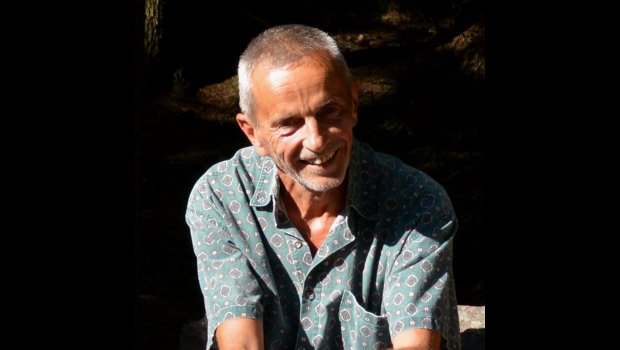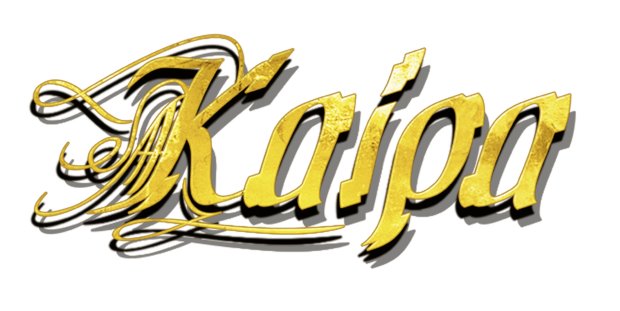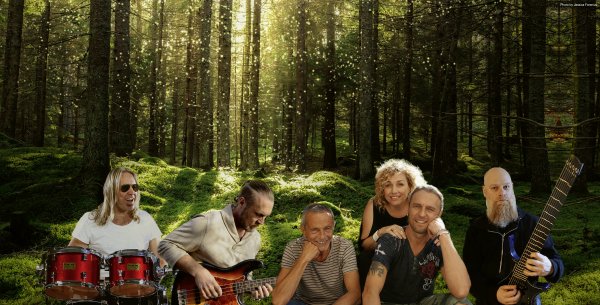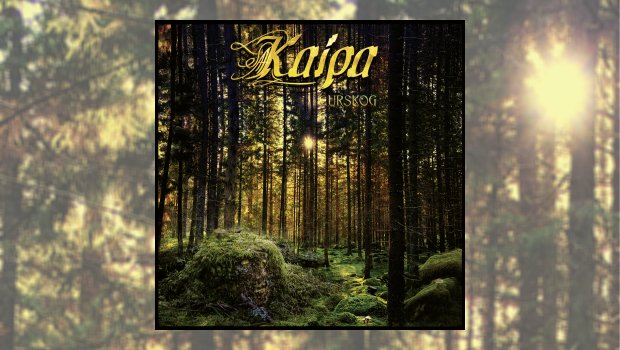Keyboardist and composer Hans Lundin is the sole constant through the history of the legendary Swedish band Kaipa, which he co-founded in 1973. With the band having just released their fourteenth album, the mesmerising Urskog, TPA’s Jez Rowden talks to Hans about his long career, the current band and the new music…
Hello Hans! Thank you so much for taking the time to discuss the new Kaipa album with The Progressive Aspect.
Firstly, I have to say how much Urskog has blown me away; it’s a thrilling listen from start to finish and I really think it’s the best Kaipa album so far. How did it turn out from your perspective?
I used to say that I’m making a black and white drawing where the other musicians are filling in all the colours. It is maybe even more true this time with Darby [Todd] behind the drums.
Going back to the very beginning: you started Kaipa in 1973. Googling the name tells me that it comes from the Finnish word meaning ‘Longing’. Is that right and, if so, why did you decide on that? What were your aspirations for the band in the early days?
I’ve never heard of the Finnish word. The name of the band when we started during the autumn of 1973 was URA KAIPA. It referred to a Swedish Stone Age chieftain and came from the book Svenskarna och deras hövdingar by Werner von Heidenstam. In 1974 we shortened the name to just KAIPA.
In 1973, bass player Tomas Eriksson and I worked as backing musicians for the new artist Harpo in a band called Harpo’s Helicopter. (A few years later Harpo had a worldwide hit with the song Moviestar). It was fun but not what I really wanted to do. I had written a lot of new songs with different characters, some ordinary pop songs, some more complex pieces and some inspired by Swedish folk music that I wanted to test in a new band of my own. So I asked Tomas if he wanted to join me and form a new band where we could play our own music. He said yes and so we formed a trio with Hammond organ, bass and drums. We started from scratch and started to rehearse eight hours a day with a strong belief and conviction that we could create something great.
What were you doing before that? Were you intending to follow a musical career?
I started playing in my first band, S:t Michael Sect, in 1964. The years 1964 to 1973 were, except for a lot of hard work and lots of fun, the best education I could ever get; I learned so much and I took all this knowledge with me when I decided to start Kaipa in 1973. Today it feels like I have a large library filled with experiences somewhere in my inner musical universe.
The first three albums (released between 1975 and 1978) are classics that I return to frequently. How were they received and how popular did the band become at that time?
When we had material for an album early in 1975 we contacted Leif Mases, a sound engineer we had worked with in Uppsala in 1971/1972 when we recorded two albums with our previous band San Michael’s. In 1975 he worked in a 24-channel studio located in an old cinema in Stockholm, Marcus Music Studio. He played our demo for the studio owner Marcus Österdahl who liked it and he invited us to come to the studio and record a few songs. Marcus played these songs for the head of the record company, Decca. He said to Marcus, ”let these talented young boys record an album”.
With our first album, KAIPA, out it was much easier to get gigs, and in 1976 we recorded our second album, Inget nytt under solen, which actually reached the Swedish charts for one week. Definitely nothing we had expected. In 1978 we recorded the album Solo with two new members in the band, singer Mats Löfgren and the new bass player Mats Lindberg [who replaced co-founder Tomas Eriksson]. At this time the band was very popular with lots of long tours around Sweden.
Did you ever play outside Sweden?
Yes, several times in Copenhagen, Denmark and a short tour in Norway.
How did the dynamic of the band change after Roine Stolt left in 1979? There were a number of new faces on the subsequent two studio albums.
The years 1978-1979 were turbulent. We were definitely successful, but by this time the chemistry in the band reached the lowest possible level. I felt like a backing musician in my own band and the inspiration to write new music was totally blown away. You can read more of this in the History Part 1 section of the Kaipa website.
Of course it was difficult to replace Roine and we decided in some way to start from zero again. This led to a record deal with Polar (ABBA’s record company) and the album Händer in 1980.
What caused Kaipa to split in 1982? Was it down to the stylistic shifts in the music industry at the time or had the band simply run its course? Had you consciously tried to adapt your sound to fit changing times? It’s definitely slicker: Nattdjurstid (1982) is edgier, and is that some disco influence on Händer?
In 1982 I was the only original member in Kaipa. The joy was back in the band and we all pushed each other to reach new levels. The last album, Nattdjurstid, we produced and recorded all by ourselves. But as you mentioned, the “stylistic shifts” in the music industry at that time made it difficult to continue. People wanted ”punk” or ”synth” music, almost no one asked for progressive rock. So we decided to take a break after our last concert in Stockholm in December 1982. We thought the situation should change, but after one year or so we had to accept that we had been too optimistic.
So, 20 years later and the time seemed right to re-energise Kaipa. How did that come about and what had you been doing in the interim? I know that there were some solo albums during the ’80s, fragments of which have been absorbed into later Kaipa compositions.
Between 1984 and 1989 I recorded three solo albums and released them on my own record label, ÖRAT Records: Tales (1984), Visions of Circles of Sounds (1985) and Houses (1989). Musically, all these albums (mostly instrumental) are a journey back to the basic “Kaipa music” with their focus on melodies. The first album contains all the music I wrote beside working with the last Kaipa album. I also wrote for radio, television, theatre and video productions. Beside my music I worked (between 1978 and 2008) in a record shop called Musikörat, which I opened in 1978 with Kaipa drummer Ingemar Bergman. I became the father of two wonderful daughters. During the years when they were growing up I wanted to spend much of my time at home. I wrote a lot of music during these years, but nothing was recorded after Houses.
In 2000 I decided to record a new album. I contacted Roine Stolt and asked him to play guitar and help me with the production. I also asked Morgan Ågren to play drums. At that time I just knew that it should be a new musical project. I asked Per Nordin to make the artwork for the album. I let him listen to the music so he could find some inspiration. He returned after a few days and said “This is irrefutably KAIPA, and this is what all your old fans have been waiting for.” So we decided to use the old band name again and the rest is history now.
How did the other new band members get involved?
I met Jonas Reingold, after hearing him in Flower Kings on Space Revolver and asked him to play on the new album.
I had heard the band Ritual and decided to make Patrik Lundström an offer. Patrik accepted and the vocals were recorded in May 2001. Patrik’s high vocal timbre brings a dimension to the music which is close to the sound of the early Kaipa. I asked Patrik if he knew any female singers who could perform the song A Road in My Mind. I wanted a singer able to make a personal interpretation, to bring a lot of energy and feeling to the song as a contrast to the soft and sweet little melody. After some searching Patrik returned to the studio in June 2001 with Aleena Gibson. She performed the song in her sophisticated, personal manner, with myself and Patrik providing a compact and complete smiling support.
I came on board with that album, 2002’s Notes From the Past, and have been a huge fan ever since. It really is a remarkable run of (now nine) albums in this second career phase. What process do you follow in putting an album together? Do you get any studio time together as a group or, given the busy schedules of everyone involved, is the recording largely done individually?
I never decide in advance a specific direction for a new album. I just let the inspiration take me, sometimes on familiar paths and sometimes in totally new directions. I always want a good melody to be the centre and the core of a new song. Often they come to me in most unexpected situations. Sometimes when I drink my morning coffee and sometimes when I take a walk. Suddenly some notes begin to play in my head forming a melody. When this happens I go to my studio and record a simple sketch so I don’t forget it. Then I can return after a week or so and listen to it again. If I still like the melody I start developing it into a song. It can take a few days or a few months to finish the song. Sometimes it becomes just a short song and sometimes one of those long epic Kaipa tracks.
We record vocals, violin and other acoustic instruments in my studio but the other musicians have their own professional studios were they record their instruments.
I believe that Urskog was written about the seasonal changes you observed whilst on bicycle rides in the Swedish countryside. Where are your favourite places to go and what got you thinking of writing new music with this theme in mind? Also, what’s your favourite season?
I live in the center of Uppsala and I like it but often I can long to get out into nature to find peace and calm and probably also inspiration for my music. The favourite time of the year is May and June when nature is born to life again and everything blooms.
Do the pieces largely come together in full before recording, or is the general structure in place around which the individual members can add their own ideas?
I always make a demo where I’m playing and singing everything. This is just a sketch so I can get an idea of the final result. In some parts the musicians have to follow the arrangements to 100% and in some parts they’re allowed more freedom. I am writing all the songs but I definitely don’t feel like a boss. The result of our collaboration is the unique sound of KAIPA and I’m very happy to have all these extremely talented musicians on board on the Kaipa ship.
Per Nilsson has been a revelation since joining the band in 2006. How did he come to be involved and how have you found collaborating with a musician from a completely different background? What has he brought to Kaipa?
In 1996 fiddle player Anders Rosén asked me to be part of a new project called Hagen. The idea was to make a record mixing Swedish folk music and heavy rock. I thought this was an interesting idea, and I saw it as a challenge and a possibility to learn more about the roots of the traditional Swedish music. The record Hagen: Corridors of Time was released on the German label Angular Records in 2001. The guitar player in Hagen was Per Nilsson and I immediately realised how diverse and talented he was. We continued to have contact and in 2006 I asked him to be a permanent member of Kaipa. He’s very important for the final result, not only as a guitar player. Sometimes he’s like a third ear or eye to me when he makes me discover all those small details in the arrangements that need to be reviewed.
Urskog seems to have moved the balance slightly towards the band’s instrumentalists, but the vocals from Aleena and Patrik remain superb. How did you manage to get what are, for me, their best ever Kaipa performances this time around?
When you have worked together for twenty years, you become a tight team and you can hear it in the final result.
And there’s a change on the drum stool with Darby Todd replacing Morgan Ågren after his 20 year stint. What brought this about and how did you come to Darby? By coincidence, I saw Darby playing in Devin Townsend’s band last week, and he was immense!
Per Nilsson met Darby a few years ago at a music fair when he was demonstrating Strandberg Guitars. They became friends and later Per played on Darby’s fantastic solo album The Reality of Zeros and Ones. When we realised that we needed a new drummer, Per suggested Darby to me. It was a good decision and he’s doing a great job on our new album. I told Darby several times during the recording session, “You are really taking the songs to a new level and bring new colours to the final result”.
Has the pandemic delayed Urskog coming together? I believe you started writing in 2018 and this has been the longest gap between albums so far. Was the process of recording any different, by necessity, for this album, or did you wait it out to record when things could be done more naturally?
In the beginning of 2020 I wanted to start the recording of the album but realised that it wasn’t possible. At that time Jonas was on tour with Steve Hacket, Per with Meshuggah and Morgan with Devin Townsend. But so suddenly Corona hit the world and all tours were cancelled. I contacted Morgan in March 2020 but after five months he had not been able to come up with a date for recording and he asked me to find another drummer. I recorded with Aleena already in October 2019 and I’m really happy that we did this because she has not been able to come back to Sweden since then. In April 2021 the recordings were completed and I informed Inside Out and asked for a release date. The first date they had was in April 2022. All musicians signed to the company that normally should be out touring had been home writing new music and recording new albums in the last years which resulted in probably 100% more albums than normal that should be released.
For many bands the process of recording during this time was different but not for Kaipa. We’ve always recorded in different studios.
The woodwinds that have brought more folk influence into the Kaipa sound have been missing from the last two albums. Was that a concsious decision and how important is traditional Scandinavian music to you?
I really like Fredrik Lindqvist and his recorders and whistles but there hasn’t been melodies suitable for these instruments for a while. I hope he can return sometime in the future. The traditional Scandinavian music has been in my blood since I was a child and will stay there and inspire me as long as I live.
The feel of traditional music is still present on Urskog, particularly in Elin Rubinsztein’s wonderful violin, but this time you’ve also added saxophone to give a jazzy vibe to one of the tracks. How did that come about?
Olof Åslund played saxophone on my last solo album Houses in 1989. When I met him in 2019 to give him an artist copy of my 6-CD box The Solo Years 1982-1989 he said, “If you need a saxophone solo in the future just give me a call.” I had never thought of using saxophone in Kaipa before but I went home and I found a part in the final song The Bitter Setting Sun where there could be a sax solo and also some melody lines.
What are your main keyboards of choice these days?
I have a basic set up of keyboards I’m using. Hammond organ, Nord Lead with distortion and wah-wah for solo sounds, Mellotron sounds, Minimoog, several variations of own programmed sounds from Hohner Clavinett and Fender Rhodes, Grand Piano and some own programmed Synth-pads that have been a part of the Kaipa sound for a long time now.
What made you decide to write songs predominantly in English in recent years, having used only Swedish for the first era of the band? That said, the sporadic Swedish songs on the recent albums certainly stand out and underline the distinctly Swedish vibe.
It felt right to write in English in 2000 for the album Notes From the Past. I wanted to reach a larger audience around the world.
When did Kaipa last play live? I’m sure there are many of us who would love to see that, but I expect it would be a logistical nightmare to get the band together. Would you like to play this music live and do you anticipate that ever becoming a possibility?
The last live performance was in December 1982. Today Kaipa is strictly a studio project and I have no plans to change that.
What next for Kaipa? Have you any thoughts about any potential themes for the next album?
I’ve said many times that maybe this is the last KAIPA album, but somehow I find inspiration and come up with new ideas and start working on a new album. If this is the case even this time, only the future can tell.
Once again, thank you very much for taking the time to talk to me. I hope Urskog will be a massive success for you – it certainly deserves to be. All the best Hans.
Many greetings.




